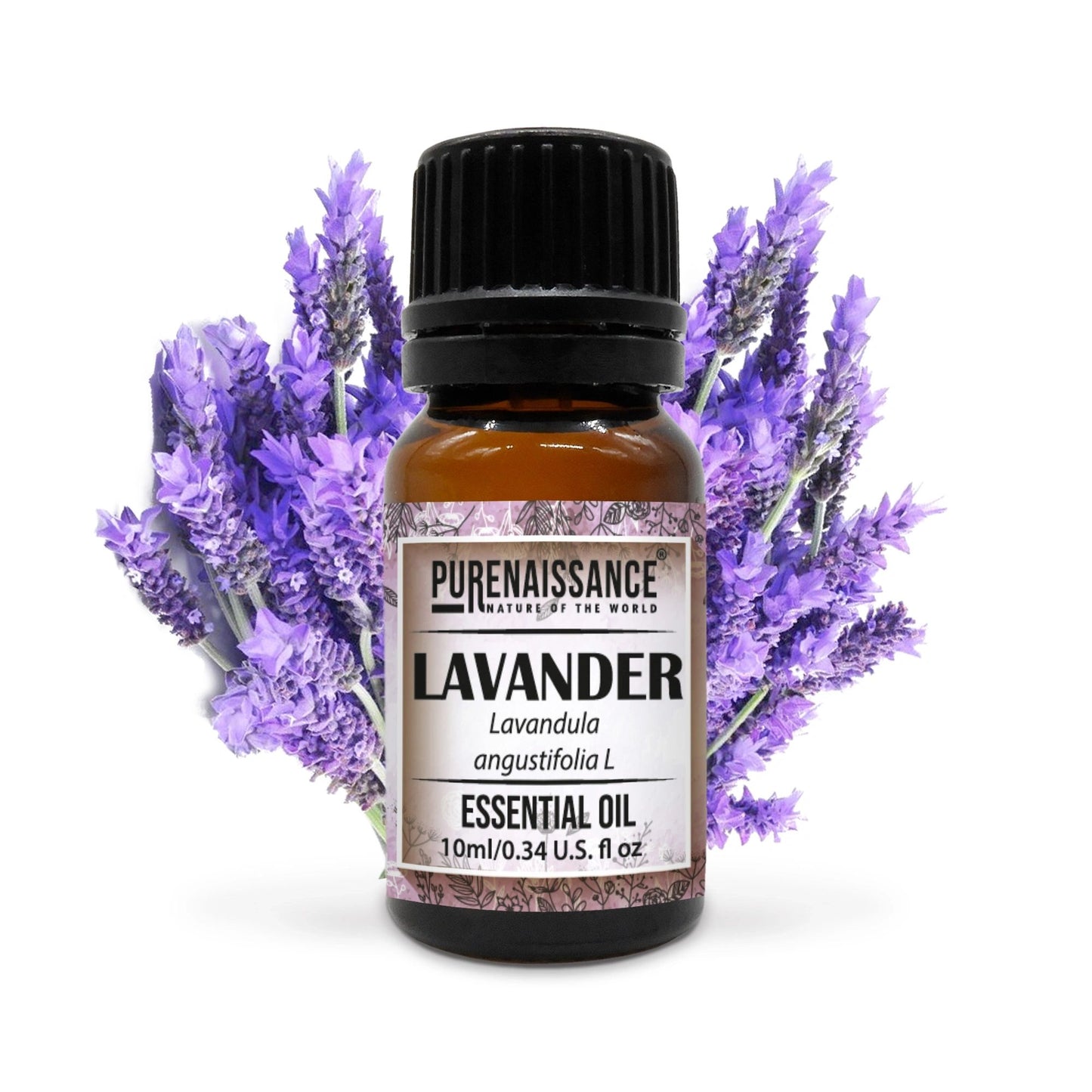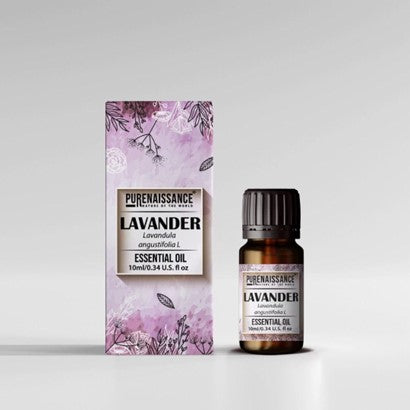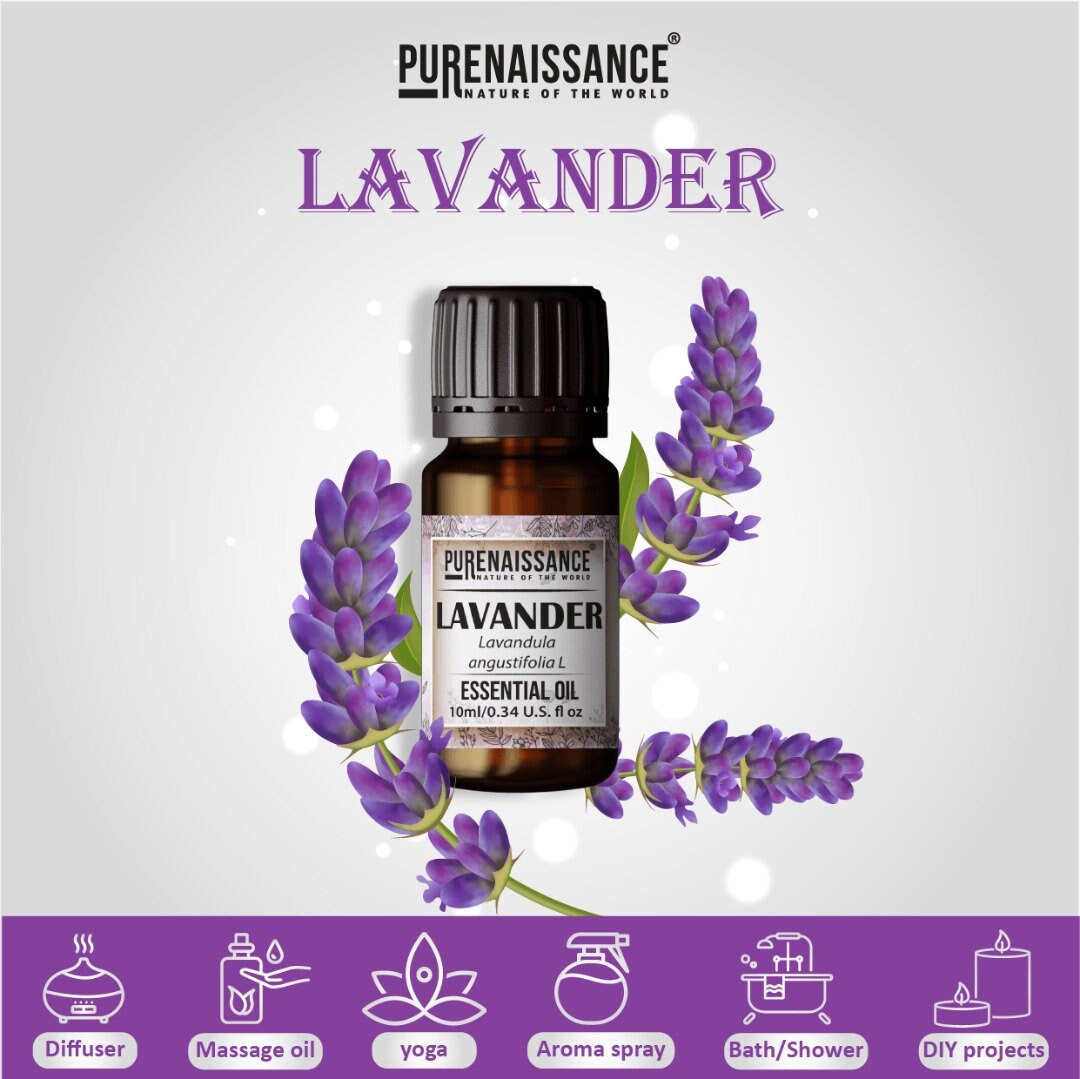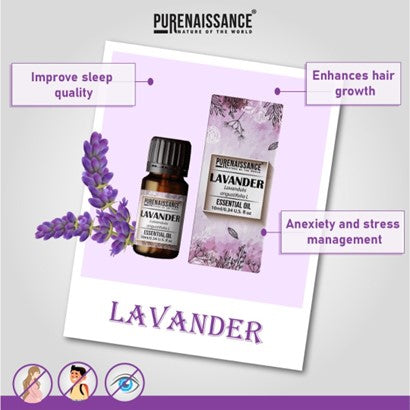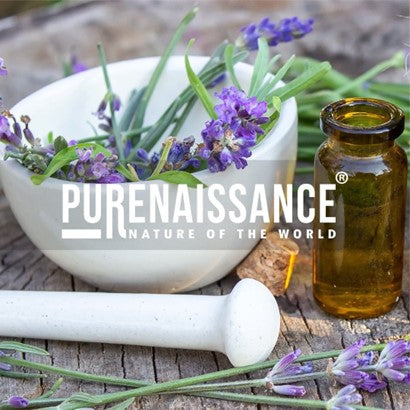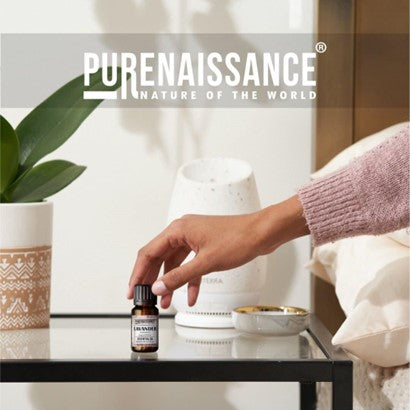Purenaissance
Pure Lavender Essential Oil Purenaissance Therapeutic Grade for, relaxation and sleep – Calming. Best for Aromatherapy and Diffuser.
Pure Lavender Essential Oil Purenaissance Therapeutic Grade for, relaxation and sleep – Calming. Best for Aromatherapy and Diffuser.
Couldn't load pickup availability
What is Lavender Essential Oil?
Lavender essential oil is one of the most widely used and versatile essential oils, renowned for its cosmetic and therapeutic benefits. Its use dates back over 2,500 years, prized for its powerful antioxidant, antimicrobial, sedative, calming, and antidepressant properties.
The Latin name for lavender, Lavare, means “to wash,” reflecting its ancient use in baths and perfumes by Romans, Persians, Greeks, and Egyptians. Lavender was also a key ingredient in Egyptian mummification, and when King Tut’s tomb was opened in 1923, a faint scent of lavender was reportedly still detectable after 3,000 years.
Both ancient and modern aromatherapy advocates its antibacterial and healing properties. Historically, lavender has been used for skin ailments, digestive issues, and relaxation. The Romans further expanded its use for bathing, cooking, and air purification.
Technical Data
- Common Name: Lavender
- Latin Name: Lavandula angustifolia, Lavandula vera (wild), Lavandula officinalis (cultivated)
- Appearance: Mobile liquid
- Color: Light yellow
- Odor: Floral, herbaceous, and rustic fragrance
- Botanical Family: Lamiaceae
- Plant Part Used: Flowered tops
- Processing Method: Steam distillation
- Type: 100% pure essential oil
- Origin: Provence, Spain
- Preferred Uses: Dermal, internal, respiratory
Chemical Composition
Main Compounds:
- Esters (linalyl acetate): 30-50%
- Monoterpenols (linalool): 30-45%
Other Compounds:
- Monoterpenes (terpinene): 5-12%
Physical Characteristics
- Density (at 20°C): 0.880 to 0.892
- Refractive Index (at 20°C): 1.450 to 1.464
- Rotatory Power (at 20°C): -12° to -7°
- Flash Point: +71°C
Storage Conditions
- Avoid contact with eyes and mucous membranes.
- Store in a cool, dry place, away from humidity.
- Keep the container tightly closed after use.
First Aid Measures
- Ingestion: Do not induce vomiting. Rinse the mouth and consult a doctor.
- Eye Contact: Rinse immediately with running water. Consult an ophthalmologist if irritation persists.
- Skin Contact: Wash with water for at least 15 minutes.
- Inhalation: Move to fresh air immediately.
Health Benefits:
- Pain Relief: Active compounds like linalool and linalyl acetate act on muscarinic, opioid, and dopaminergic receptors for analgesic effects.
- Antispasmodic: Reduces muscle spasms through action mediated by cyclic AMP.
- Skin Regeneration: Camphor stimulates tissue repair and circulation, promoting healing.
- Anti-inflammatory: Reduces swelling and discomfort.
Well-being:
- Natural Sedative: Linalool offers calming effects, reducing stress and promoting relaxation by blocking neuromuscular ion channels.
Uses and Indications
For Health:
- Skin: Burns, sunburns, eczema, rosacea, cuts, pruritus, and insect bites.
- ENT and Respiratory: Asthma, bronchitis, sinusitis, laryngitis, and spasmodic cough.
- Pain: Headaches, migraines, muscle cramps, and menstrual pain.
- Other: Hypertension, nervous spasms, and stress relief.
For Well-being:
- Anxiety, insomnia, overwork, mood swings, and stress management.
For Beauty:
- Acne: Combine with aloe vera and tea tree oil for a soothing gel.
- Dark Circles: Mix with almond oil and aloe vera for an under-eye treatment.
- Wrinkles: Blend with rosehip seed oil for an anti-aging serum.
- Scars: Mix with argan and frankincense oils for improved skin healing.
- Dry Lips: Combine with coconut oil for hydration.
- Hair Conditioner: Blend with apple cider vinegar for smoother, shinier hair.
Synergies with Lavender Essential Oil
- With tea tree oil for skin conditions.
- With ylang-ylang for hypertension.
- With mandarin and sweet orange for relaxation (via diffusion).
- Safe for most adults in food, topical, and inhalation uses.
- Use cautiously for young boys, as lavender may disrupt hormone levels.
- Avoid during the first trimester of pregnancy; consult a therapist for internal use.
Side Effects:
May cause skin irritation, constipation, headaches, or appetite changes in rare cases.
Share
